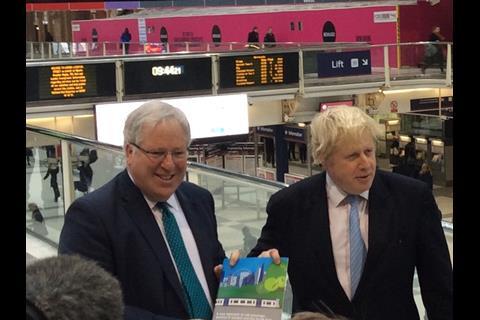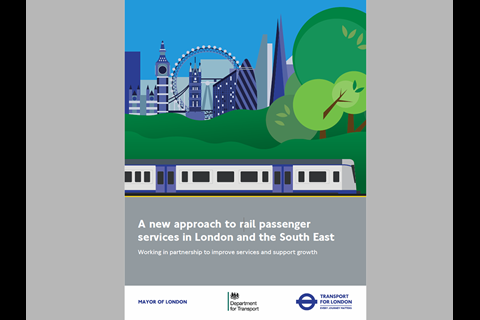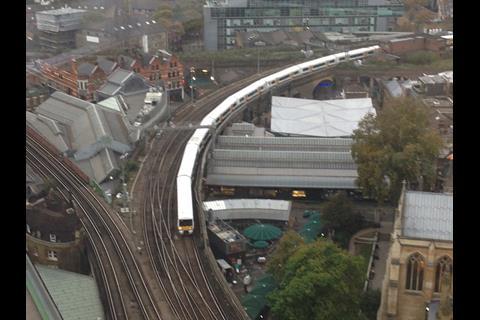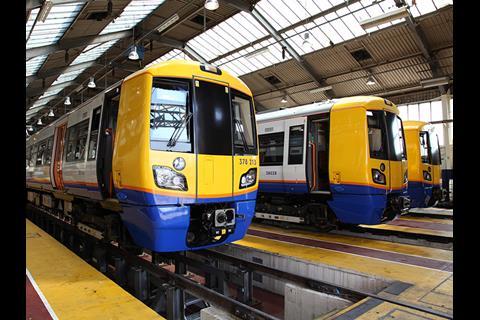UK: The Department for Transport and Transport for London released a consultation document on January 21 proposing the creation of a partnership to ‘provide joined-up strategic direction for the specification and management for passenger services across London and the South East’.
The aim would be to increase local input into the franchising process, increase capacity, reliability and customer service levels, and possibly create a London Suburban Metro based on the inner-suburban rail network.
‘We are working closely with TfL to agree the best way of delivering integrated, seamless journeys for passengers both inside and outside of London, and as we continue these discussions, we want to hear people’s views’, said Secretary of State for Transport Patrick McLoughlin.
A prospectus proposes ‘new mechanisms’ to enable local authorities, Local Enterprise Partnerships and other bodies inside and outside London to have a direct say in the way services are planned and specified by DfT and TfL.
DfT would remain accountable for outer-suburban and longer-distance services, while services operating wholly or mostly within Greater London would be transferred to TfL when the current operating franchises expire. The precise boundaries ‘will take time to agree’, and TfL told Railway Gazette that the current consultation is a ‘top level’ overview. Details such as the operating contract model and possible integration with the existing TfL-controlled London Overground operating concession have still to be decided.
Aims include ensuring ‘service improvements for all and no detrimental effect on fares or for longer distance services.’ There would be ‘clear safeguards’ for services from outside London, with a ‘guiding principle’ that their train paths would not be affected by any changes within the capital.
Options are to be explored for a London Suburban Metro, which would provide at least four and ideally six trains/h within Greater London ‘in the medium term’; this would increase the percentage of south London stations with a minimum service of a train every 15 min from 67% to more than 80%. There would be consistent stopping patterns and ‘clear, identifiable routes’, while new ‘metro-style’ trains could offer more doors and standing space with better acceleration. The prospectus says London Suburban Metro would ‘require significant investment and take some years to achieve’, and the partners are to ‘work to identify options for funding this’.
Intra-London fares could be integrated to operate on a zonal basis irrespective of services used, with simplification of fares from outside London which are valid across the two networks. However, the prospectus cautions that the financial pressures on DfT and TfL mean ‘this may take time.’
The prospectus does not commit to specific infrastructure proposals, or changes to accountability for infrastructure, because a separate review of the funding and structure of Network Rail is currently being undertaken by HS1 Ltd Chief Executive Nicola Shaw.
Paul Plummer, Chief Executive of the Rail Delivery Group which represents Network Rail and train operators, said the industry ‘works closely with both TfL and DfT to run services and will work with them to help continue to improve services for passengers and make the best possible use of scarce capacity’. He said ‘the railway in and around London is full in many places and, even with planned improvements to allow more trains to run, the desire for more services for passengers in the capital will have to be balanced with the needs of passengers further away and with the needs of rail freight.’
| Franchise renewal dates | |
|---|---|
| South West Trains (bidders for the next franchise have been asked to propose plans for a separate inner-London business unit which could be transferred to TfL in 2020, once capacity works at Waterloo have been completed) | 2017 |
| Southeastern | 2018 |
| Thameslink Southern Great Northern | 2021 |






















